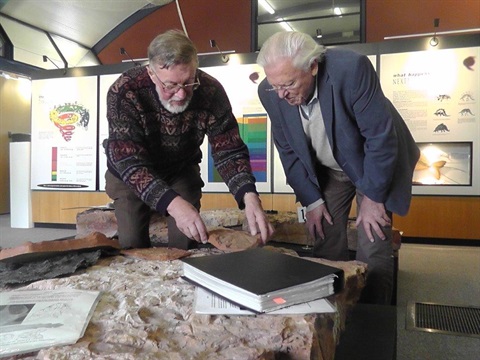Canowindra's world famous fish fossils moving to new $600,000 home
Published on 31 July 2019

Some of the world’s most unique fossils, which had been underground for 360 million years, are being moved to a new home this week.
The bulk of Canowindra’s unique fish fossil slabs are being relocated from a temporary storage area to a new, purpose-built $600,000 storage and research facility in the town.
The new centre, located adjacent to the Age of Fishes Museum, was built with the assistance of a $300,000 NSW Government grant and $300,000 from Cabonne Council.
While the best of the fish fossil slabs have been on display at the museum for a number of years, the rest of the slabs have been stored in less than ideal conditions beneath the grandstand at Canowindra Showground.
The world famous fossils were discovered by chance at Canowindra in 1955 when a council road worker turned over a large rock slab with strange impressions on it.
He pushed the slab aside, where it was later spotted by a local beekeeper who recognised its importance and notified the Australian Museum in Sydney. Expert examination of the slab later confirmed it to be one of the most remarkable discoveries of its kind anywhere in the world.
In 1993, an exploratory dig led by Australian Museum palaeontologist Dr Alex Ritchie resulted in the recovery of 70-80 tonnes of rock slabs containing around 4,000 fish specimens. (Dr Ritchie (left) is pictured with world renowned broadcaster and naturalist Sir David Attenborough during Sir David's visit to the Age of Fishes Museum in 2013.)
With some of the slabs weighing up to two tonnes, this week’s relocation to their new home will be a logistical challenge, as well as marking a milestone in the history of the Age of Fishes Museum.
As part of the move, the fossils, which were recently gifted to the Australian Museum by Cabonne Council, will be digitally scanned by scientists from Macquarie University. This will enable high resolution 3D rendering and 3D printing of the fossils, as well as digitisation and registration to meet latest international scientific standards.